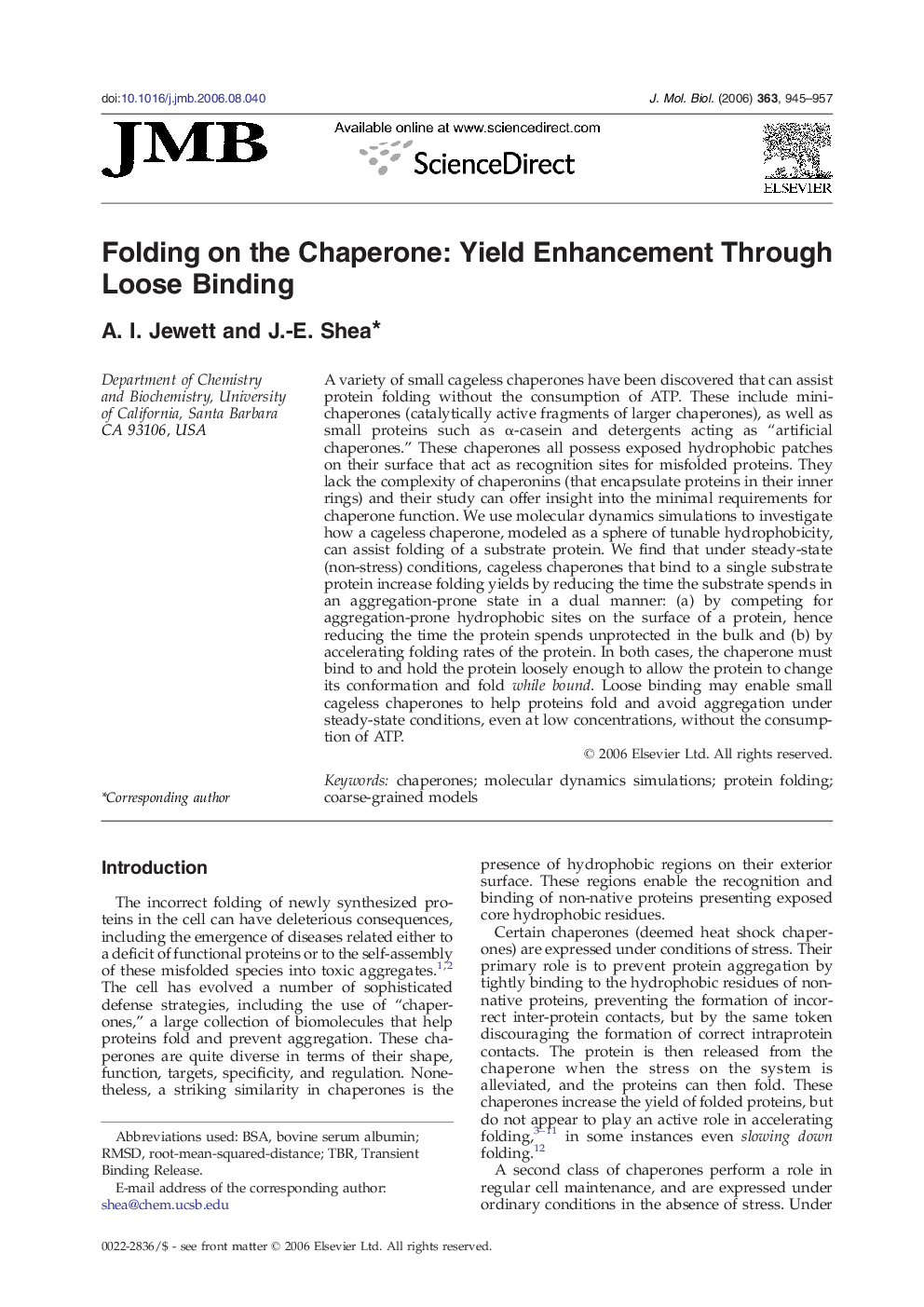| Article ID | Journal | Published Year | Pages | File Type |
|---|---|---|---|---|
| 2189365 | Journal of Molecular Biology | 2006 | 13 Pages |
A variety of small cageless chaperones have been discovered that can assist protein folding without the consumption of ATP. These include mini-chaperones (catalytically active fragments of larger chaperones), as well as small proteins such as α-casein and detergents acting as “artificial chaperones.” These chaperones all possess exposed hydrophobic patches on their surface that act as recognition sites for misfolded proteins. They lack the complexity of chaperonins (that encapsulate proteins in their inner rings) and their study can offer insight into the minimal requirements for chaperone function. We use molecular dynamics simulations to investigate how a cageless chaperone, modeled as a sphere of tunable hydrophobicity, can assist folding of a substrate protein. We find that under steady-state (non-stress) conditions, cageless chaperones that bind to a single substrate protein increase folding yields by reducing the time the substrate spends in an aggregation-prone state in a dual manner: (a) by competing for aggregation-prone hydrophobic sites on the surface of a protein, hence reducing the time the protein spends unprotected in the bulk and (b) by accelerating folding rates of the protein. In both cases, the chaperone must bind to and hold the protein loosely enough to allow the protein to change its conformation and fold while bound. Loose binding may enable small cageless chaperones to help proteins fold and avoid aggregation under steady-state conditions, even at low concentrations, without the consumption of ATP.
